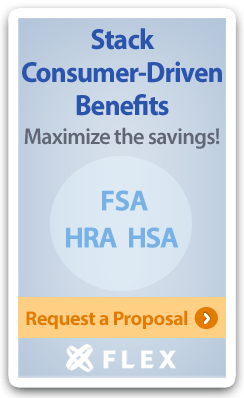Benefits Buzz
The 2019 PCORI Story

The Affordable Care Act (ACA) created a research institute known as the Patient-Centered Outcomes Research Institute (PCORI). The goal of PCORI is to help patients and those who care for them make better-informed decisions about healthcare choices. PCORI is funded by fees which are charged to health plans.
The following information is designed to help employers understand their upcoming payment obligations.
Fee Amount – The upcoming fee amount depends on when the plan year ended:
• Plan years ending between January 1, 2018, and September 30, 2018 - $2.39 per covered person
• Plan years ending between October 1, 2018, and December 31, 2018 - $2.45 per covered person
Plan Year Ending Date – This is the last day of the plan year. As an example, a plan that had a July 1, 2017 effective date would have a plan year ending date of June 30, 2018. Alternatively, a plan that had an effective date of January 1, 2018, would have a plan year ending date of December 31, 2018. Please note that plans with effective dates starting after January 1, 2018 would not have an end date until 2019, and therefore these plans are not subject to the fee this time around (though a fee may be due in 2020).
Due Date – The fees are due by July 31, 2019 for plan years which ended in 2018.
Fully-insured health plans – The insurance company is responsible for paying the PCORI fee, though most employers with fully-insured health plans are indirectly paying these fees through slightly higher premiums.
Self-insured health plans – The employer is responsible for paying the PCORI fee. The fee is determined based on the average number of covered lives in the plan year ending in 2018. An easy way to calculate the average number of covered lives is using a snapshot method. Under this method, an employer picks one day during each quarter of the plan year (e.g. Jan 1, Apr 1, Jul 1, Oct 1), adds the total number of covered lives (including spouses and dependents) for those days, and divides that number by 4.
Non-Integrated HRAs – These are Health Reimbursement Arrangements (HRAs) which are not tied to a traditional group health plan and will generally include Qualified Small Employer HRAs (QSEHRAs) and certain Retiree HRAs. The PCORI fee for these type of HRAs should be calculated the same way as the self-insured health plans referenced above. However, if the non-integrated HRA only reimburses dental and/or vision expenses, no PCORI fee applies to the HRA.
Special Rules for Integrated HRAs – These are HRAs that are only available to employees also enrolled in a traditional group health plan. Employers that have a fully-insured health plan coupled with an integrated HRA must pay the PCORI fee for the HRA, but they may treat each HRA participant as a single covered life. In other words, the fee generally does not apply to spouses or dependents covered under the HRA. Employers with a self-insured health plan and an integrated HRA may treat the coverage as a single plan assuming both plans have the same plan year.
FSAs – Flexible Spending Accounts (FSAs) are not subject to PCORI fees if they are excepted benefits. To be considered an excepted benefit, employees must be offered a traditional group health plan, and if the employer contributes to the FSA, the employer may not contribute more than (the greater of) $500 or a dollar-for-dollar match of the employee’s contribution.
HSAs – Health Savings Accounts (HSAs) are not subject to PCORI fees.
Dental and Vision Plans – Stand-alone dental and vision plans are not subject to PCORI fees.
Making Payments – Employers should complete Form 720 for the second quarter to make payments. Form 720 and associated instructions are typically updated each April, and employers should check this website in April 2019 to see if the appropriate form version and instructions are available.
Do you have a question about PCORI Fees or other ACA provisions?

